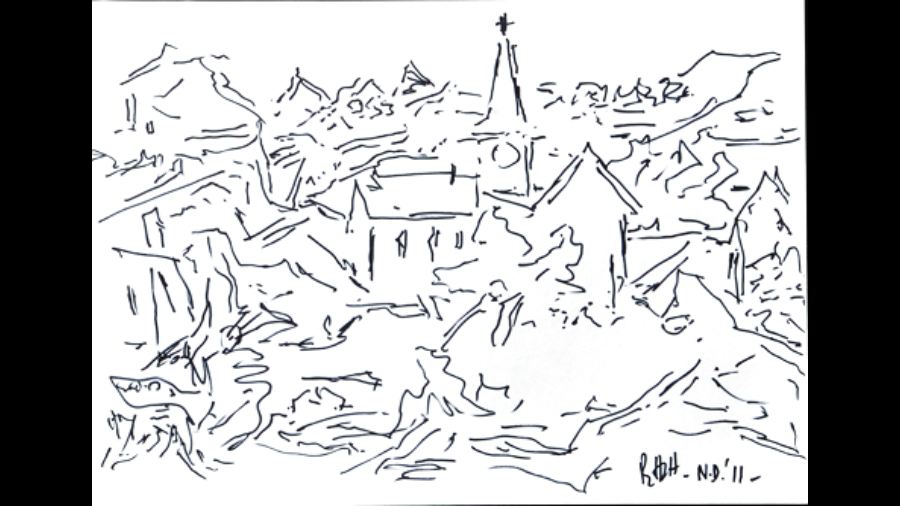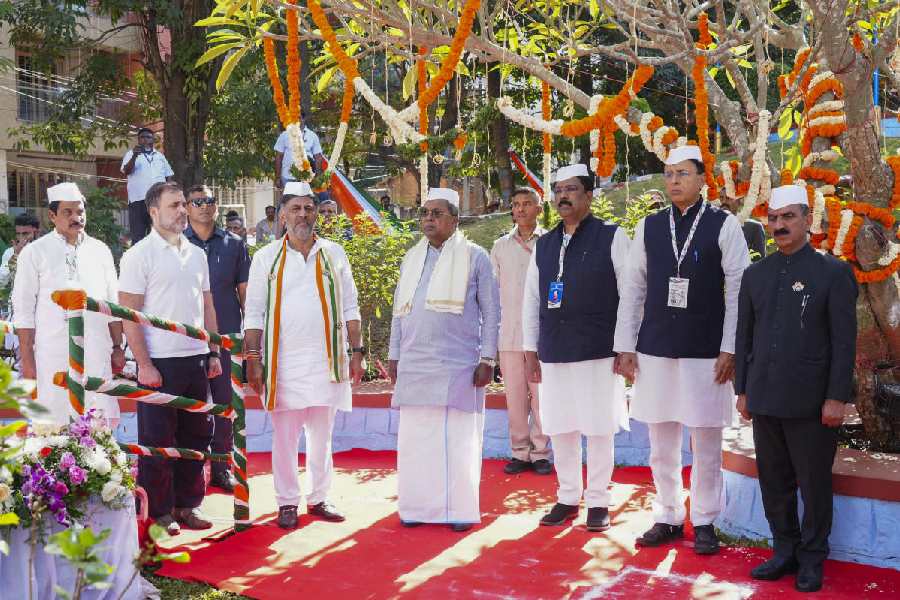Sayed Haider Raza (1922-2016) revisited the scenes of his childhood in the wilds of Madhya Pradesh and his youth in Mumbai and the French countryside — in his imagination at least — in his last years after his return to India in 2010. At the exhibition, 100 Years of SH Raza (February 22-March 2) at Akar Prakar, amongst the canvases with their hot colours pulsating within the geometric forms that this master is identified with, are a couple of drawings with a black marker pen on stark white sheets that stand out by virtue of their austerity, drained of colour as they are. These are dated 2011.
His vision had blurred, and he had become enervated. Yet he attacked the blank sheets with amazing ferocity, lacerating the white surface with a flurry of seemingly disjointed jigsaw puzzle of strokes that fell into shape and became a countryside without a soul in sight, mountains ringing the horizon. Rising from amidst the waves of greenery is the steeple of a church and some other structures (picture), perhaps dwellings of monks. The presence of these elements is suggested rather than clearly stated. So it has a fluidity and malleability as he did not try to rein in his imagination. Landscapes formed a significant part of Raza’s oeuvre and these drawings are their extension.
These seem to be the last desperate attempt by the artist to explore “my inner experience and involvement with the mysteries of nature and form, which is expressed in colour, line, space, and light”, although these drawings are devoid of colour.
In another expressionistic work, Raza reconfigures the upheaval in his mind through the turbulence of the great Narmada river of his childhood. In the turmoil of this work, Raza yearned fiercely for the dense forests of the region as “The most tenacious memory of my childhood is the fear and fascination of Indian forests…” Tumultuous like a river in spate, his imagination is about to burst its banks. Physical inhibition had liberated his mind.











